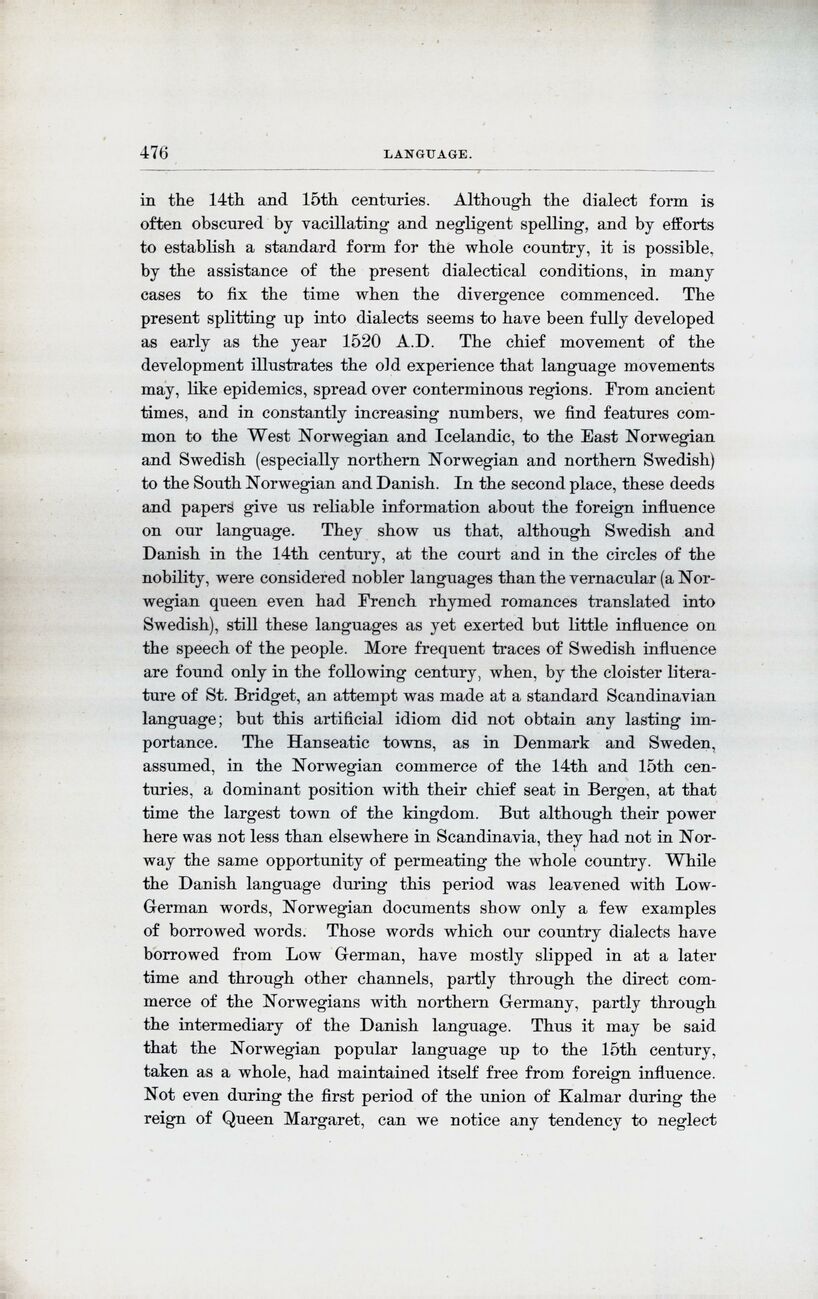
Full resolution (JPEG) - On this page / på denna sida - Language, by Hj. Falk

<< prev. page << föreg. sida << >> nästa sida >> next page >>
Below is the raw OCR text
from the above scanned image.
Do you see an error? Proofread the page now!
Här nedan syns maskintolkade texten från faksimilbilden ovan.
Ser du något fel? Korrekturläs sidan nu!
This page has been proofread at least once.
(diff)
(history)
Denna sida har korrekturlästs minst en gång.
(skillnad)
(historik)
in the 14th and 15th centuries. Although the dialect form is
often obscured by vacillating and negligent spelling, and by efforts
to establish a standard form for the whole country, it is possible,
by the assistance of the present dialectical conditions, in many
cases to fix the time when the divergence commenced. The
present splitting up into dialects seems to have been fully developed
as early as the year 1520 A. D. The chief movement of the
development illustrates the old experience that language movements
may, like epidemics, spread over conterminous regions. From ancient
times, and in constantly increasing numbers, we find features
common to the West Norwegian and Icelandic, to the East Norwegian
and Swedish (especially northern Norwegian and northern Swedish) [[** komma mgl? **]]
to the South Norwegian and Danish. In the second place, these deeds
and papers give us reliable information about the foreign influence
on our language. They show us that, although Swedish and
Danish in the 14th century, at the court and in the circles of the
nobility, were considered nobler languages than the vernacular (a
Norwegian queen even had French rhymed romances translated into
Swedish), still these languages as yet exerted but little influence on
the speech of the people. More frequent traces of Swedish influence
are found only in the following century, when, by the cloister
literature of St. Bridget, an attempt was made at a standard Scandinavian
language; but this artificial idiom did not obtain any lasting
importance. The Hanseatic towns, as in Denmark and Sweden,
assumed, in the Norwegian commerce of the 14th and 15th
centuries, a dominant position with their chief seat in Bergen, at that
time the largest town of the kingdom. But although their power
here was not less than elsewhere in Scandinavia, they had not in
Norway the same opportunity of permeating the whole country. While
the Danish language during this period was leavened with
Low-German words, Norwegian documents show only a few examples
of borrowed words. Those words which our country dialects have
borrowed from Low German, have mostly slipped in at a later
time and through other channels, partly through the direct
commerce of the Norwegians with northern Germany, partly through
the intermediary of the Danish language. Thus it may be said
that the Norwegian popular language up to the 15th century,
taken as a whole, had maintained itself free from foreign influence.
Not even during the first period of the union of Kalmar during the
reign of Queen Margaret, can we notice any tendency to neglect
<< prev. page << föreg. sida << >> nästa sida >> next page >>